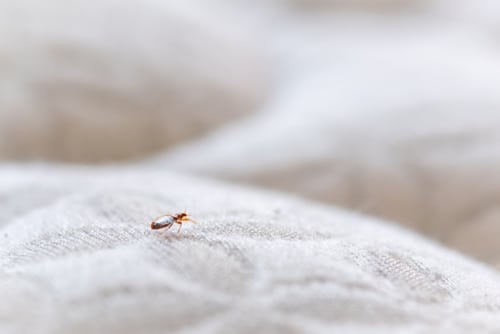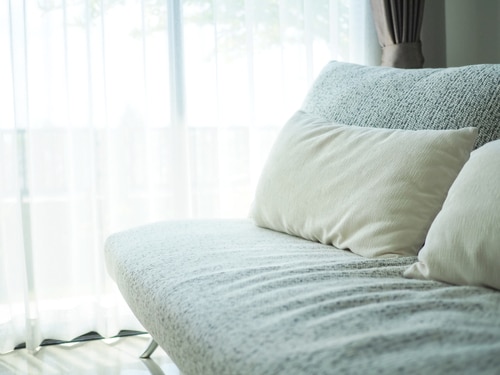
Red Wine Stains on Your Sofa: Easy Removal Tips
October 15, 2023
Can Sofa Cleaning Keep Pests Away?
October 16, 2023Upholstery Cleaning: Refreshing Furniture Fabrics

Upholstery Cleaning: Refreshing Furniture Fabrics. In this comprehensive guide, we’ll explore the world of upholstery cleaning and highlight its pivotal role in maintaining a healthy, hygienic, and visually appealing home environment.
Clean upholstery is not just about aesthetics; it contributes significantly to your overall comfort and well-being.
It is integral to a well-maintained home. This article will delve into the various aspects of upholstery cleanliness and its impact on comfort and hygiene.
Table of Contents
Significance of Upholstery Cleanliness
Maintaining clean upholstery goes beyond aesthetics; it directly impacts your health. Neglected upholstery can harbor allergens, dust mites, and even harmful bacteria, leading to various health issues, including allergies and respiratory problems.
Health Risks Associated with Neglected Upholstery
Neglected upholstery can become a breeding ground for allergens and bacteria. This can exacerbate allergies, asthma, and other respiratory conditions, especially in individuals with preexisting health concerns.
The Aesthetic and Functional Aspects of Clean Furniture
Clean upholstery contributes to a visually appealing home and enhances functionality. Stains and dirt can compromise the comfort and longevity of your furniture.
The Need for Regular Upholstery Cleaning
To maintain the freshness and hygiene of your upholstery, it’s crucial to establish a regular cleaning schedule.
Regular cleaning, typically every 6-12 months, is recommended to prevent the build-up of dirt and allergens. High-traffic areas may require more frequent cleaning.
DIY vs. Professional Cleaning: What’s Best for Your Furniture?
While DIY cleaning methods can be effective for routine maintenance, professional upholstery cleaning offers a deeper and more thorough cleaning. Professionals have the expertise and specialized equipment to tackle tough stains and remove allergens.
Preventative Maintenance to Extend Upholstery Lifespan

To prolong the life of your upholstery, consider the following preventative maintenance tips:
- Vacuum your upholstery regularly to remove dust and allergens.
- Keep your furniture out of direct sunlight to prevent fading.
- Address spills and stains promptly to prevent permanent damage.
- Rotate cushions and pillows to ensure even wear.
Essential Upholstery Cleaning Tools and Supplies
Must-Have Cleaning Supplies for Effective Upholstery Cleaning
To effectively clean your upholstery, gather the following cleaning supplies:
- An upholstery cleaner or fabric-specific cleaner
- Soft-bristle brush or upholstery brush
- Microfiber cloths or towels
- Vacuum cleaner with upholstery attachments
- Stain remover suitable for your upholstery fabric
- Plastic drop cloths to protect the floor
Eco-Friendly and Chemical-Free Cleaning Options
For those who prefer eco-friendly cleaning, consider using natural ingredients like vinegar and baking soda. These options are effective and environmentally responsible.
Specialized Cleaning Tools for Different Upholstery Fabrics
Different upholstery fabrics (fabric, leather, microfiber) may require specialized cleaning tools and solutions. It’s essential to choose the right tools to avoid damaging your upholstery.
Step-by-Step Guide to Upholstery Cleaning

Cleaning Different Upholstery Fabrics
Each type of upholstery fabric requires specific cleaning methods to preserve its beauty and cleanliness:
Fabric Upholstery
- Vacuum the upholstery to remove loose dirt and dust.
- Apply a suitable upholstery cleaner or fabric-specific cleaner.
- Gently scrub the fabric with a soft-bristle brush or upholstery brush.
- Wipe away excess moisture with a clean, dry microfiber cloth.
Leather Upholstery
- Dust the leather upholstery with a clean, dry microfiber cloth.
- Apply a leather-specific cleaner to a cloth, not directly to the leather.
- Gently wipe the leather surface.
- Buff the leather with a dry, soft cloth to restore its shine.
Microfiber Upholstery
- Vacuum the upholstery to remove loose dirt and dust.
- Mix a solution of equal parts water and mild dish soap.
- Dampen a clean microfiber cloth with the solution.
- Gently blot and scrub the stained areas.
- Allow the upholstery to air dry.
Removing Stubborn Stains and Grime
For tough stains and grime, follow these steps:
- Blot the stain with a clean, dry cloth to remove excess moisture.
- Apply a stain remover suitable for your upholstery fabric.
- Gently blot and scrub the stained area with a soft cloth.
- Rinse the area with clean water and blot dry.
After cleaning, maintain cleanliness by vacuuming regularly, addressing spills promptly, and rotating cushions to ensure even wear.
Addressing Specific Upholstery Challenges

Pet Stains and Odors: Effective Removal Techniques
To tackle pet stains and odors:
- Blot up any excess moisture.
- Apply an enzyme-based pet stain remover.
- Gently scrub the area with a soft cloth.
- Rinse with clean water and blot dry.
Cleaning Delicate and Antique Upholstery
Delicate and antique upholstery requires gentle cleaning:
- Dust the upholstery with a clean, dry cloth.
- Consult a professional upholstery cleaner with experience in delicate fabrics.
Upholstery Protectors and Their Role in Stain Prevention
Upholstery protectors create a barrier against spills and stains. Consider applying a protector after cleaning to prevent future staining.
Natural and DIY Upholstery Cleaning Solutions
Using Everyday Household Items for Cleaning
Harness the power of everyday household items for upholstery cleaning:
- Baking Soda: Effective for deodorizing and stain removal.
- Vinegar: Dissolves odors and can help remove stains.
- Lemon Juice: Provides a fresh scent and can aid in stain removal.
Baking Soda and Vinegar: Effective Cleaning Combinations
Combine baking soda and water to create a paste for scrubbing stains. Mix vinegar and water to create a natural cleaning solution for an extra boost.
Natural Solutions for Tough Stains and Odors
For tough stains and odors, apply a mixture of equal parts water and vinegar to the affected area. Blot the area with a cloth, then sprinkle baking soda on it. Let it sit for a few hours, then vacuum it up.
Frequently Asked Questions (FAQs)

How often should I clean my upholstery to maintain hygiene?
Cleaning your upholstery every 6-12 months is recommended, with high-traffic areas requiring more frequent cleaning.
Are there any specific cleaning products safe for different upholstery fabrics?
Many commercial upholstery cleaners are safe for various upholstery fabrics. However, it’s crucial to read product labels and choose cleaners that match your specific upholstery material.
How can I remove tough stains and pet odors from upholstery?
For tough stains, apply a stain remover suitable for your upholstery fabric. To remove pet odors, use an enzyme-based pet stain remover.
Can I use essential oils for upholstery cleaning?
Yes, essential oils like lavender or tea tree oil can be added to your DIY cleaning solutions for a pleasant scent and added cleaning power.
What’s the cost of professional upholstery cleaning?
The cost of professional cleaning varies but is generally based on the size and condition of your upholstery. Request quotes from local upholstery cleaning services for accurate pricing.
Are there any considerations for antique upholstery cleaning?
Antique upholstery requires special care. Consult a professional upholstery cleaner with experience in handling delicate and antique fabrics.
Should I be concerned about upholstery fabric fading?
To prevent fabric fading, keep your furniture out of direct sunlight or use window treatments to block UV rays.
How can I prevent future staining and odors on upholstery?
Prevent future staining and odors by establishing a regular cleaning routine, applying upholstery protectors, and addressing spills promptly.
Benefits of Regular Upholstery Cleaning Beyond Cleanliness
Improved Indoor Air Quality and Allergen Reduction
Regular upholstery cleaning helps remove allergens, dust mites, and pollutants, improving indoor air quality.
Preventing Upholstery Damage and Deterioration
Proactive maintenance prevents premature wear and tear, extending the lifespan of your upholstery.
Enhancing Overall Appearance and Longevity of Furniture
Clean upholstery contributes to an aesthetically pleasing home and ensures that your furniture remains comfortable and functional for years to come.
Upholstery Cleaning: Refreshing Furniture Fabrics – Conclusion

In conclusion, upholstery cleaning is not just about maintaining a visually appealing home; it is fundamental to creating a healthy, hygienic, and comfortable living environment.
We encourage you to prioritize the cleanliness and care of your upholstery, enjoying the refreshed and inviting atmosphere it brings to your home.
By following the guidelines in this comprehensive guide, you can ensure that your furniture fabrics remain in excellent condition, providing comfort and style to your living spaces.
Are you seeking professional and reliable carpet cleaning or upholstery cleaning services in Singapore? Contact us today!

